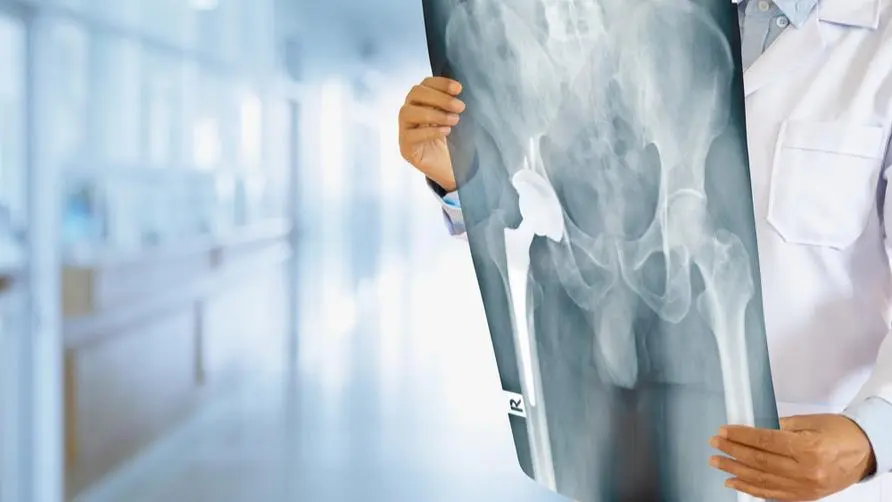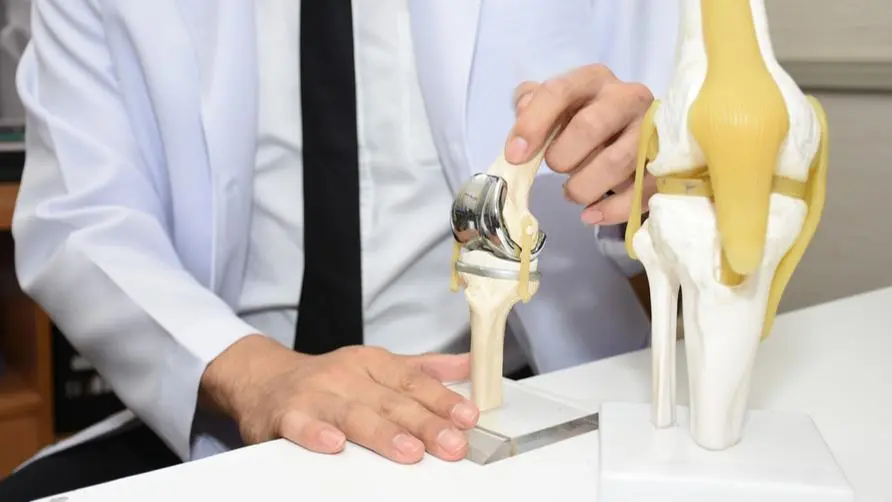After the car accident, she suffered a "comminuted fracture" of her pelvis, causing her legs to grow short and her muscles to atrophy! 4 signs may be femoral head necrosis

Bone necrosis after comminuted fracture! Her lower limbs became shorter and her muscles atrophied
Joint pain after fracture surgery, turned out to be “femoral head necrosis”? A 20-year-old female college student was involved in a serious car accident while attending school, resulting in a comminuted fracture of her left pelvis and a dislocated hip joint. She only saved her life after emergency pelvic angiography, embolization to stop bleeding, and fracture reduction and fixation surgery. Unexpectedly, the pain in the hip joint worsened during the postoperative rehabilitation period. Another X-ray examination revealed that it was post-traumatic “femoral head necrosis” and arthritis of the hip joint, and artificial hip joint surgery was necessary.
Dr. Huang Zanwen, director of the Department of Joint Reconstruction and Orthopedics at Renai Hospital in Dali, said that when the female college student went to the hospital, her left lower limb had become significantly shorter, and her left hip joint had muscle atrophy. Not only did she often fall during daily activities, she was in severe pain, she needed crutches to walk, and she was unable to Fall asleep normally. After minimally invasive hip surgery, I was able to get out of bed and move around on the same day. After a follow-up visit 2 weeks later, I no longer needed crutches to walk. The problem of inconsistent lengths of my feet was also improved.
Pelvic fractures are mostly caused by young people, and internal bleeding may exceed 2000cc.
Dr. Huang Zanwen pointed out that pelvic fractures mostly occur in young people aged 20-40 years old, usually due to high-energy trauma, such as car accidents and falls from heights. Since a pelvic fracture will produce a large amount of internal bleeding (an average of more than 2000cc), in addition to a large amount of intravenous fluids and blood transfusions, a pelvic strap will also be used to fix it in the emergency. Pelvic angiography and embolization will be arranged to stop the bleeding. The orthopedic surgeon will evaluate the timing of subsequent surgery to fix the fracture. .
Dr. Huang Zanwen said that pelvic fractures are still mainly fixed with steel nails and plates, and only in a few cases artificial joint replacement surgery is performed from the beginning. However, the rate of femoral head necrosis and traumatic arthritis after pelvic fracture is as high as 30-40%. For this type of patients, artificial hip replacement surgery is currently the main treatment method.
Seriously, I may need a wheelchair! Pay attention to the four major symptoms of femoral head necrosis
Dr. Huang Zanwen said that the main symptoms of femoral head necrosis and traumatic arthritis after pelvic fracture include pain and restriction of joint movement, and sometimes shortening of the lower limbs and muscle atrophy. In severe cases, patients often need crutches or even wheelchairs for transportation. .
Severe bone deformation and bone defects are common after pelvic fracture surgery, and joint adhesion and muscle atrophy are not uncommon. Dr. Huang Zanwen pointed out that when arranging artificial joint replacement for such patients, the steel nails and plates previously used to fix fractures can easily cause surgical difficulties, so it is not easy to perform artificial joint replacement surgery.
Dr. Huang Zanwen reminds that after artificial joint replacement surgery, you should start getting out of bed as soon as possible and carry out appropriate muscle strength training. If symptoms such as pain, limited joint movement, shortened lower limbs, and muscle atrophy are found after a fracture, you should consult an orthopedic surgeon as soon as possible to receive appropriate treatment and return to normal life as soon as possible.
Further reading:





